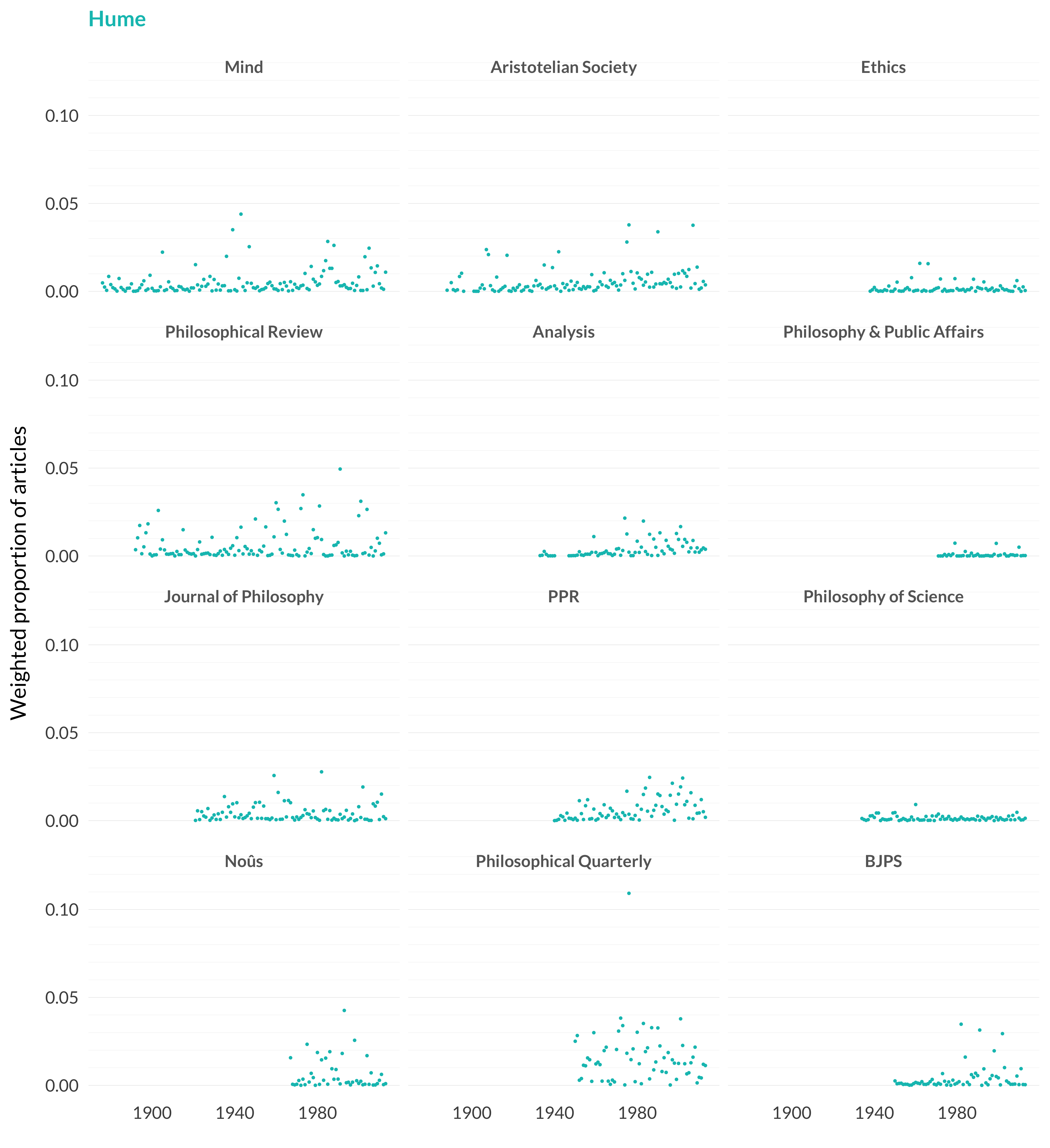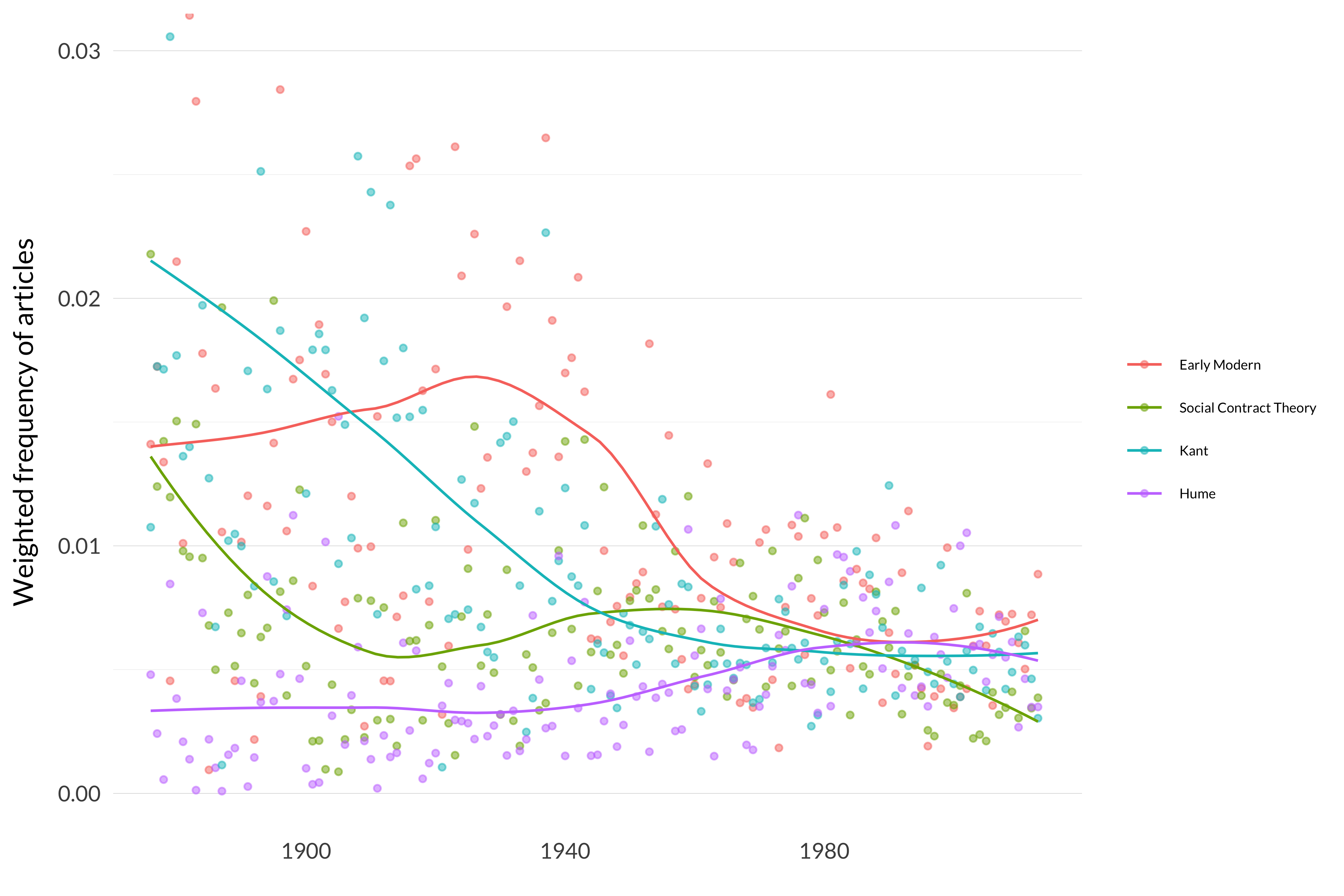2.45 Hume
Category: History of Philosophy
Keywords: hume, sceptic, scepticism, enquiry, coherence, sceptical, treatise, circularity, impressions, credibility, circular, impression, coherent, uniformity, sentiments
Number of Articles: 196
Percentage of Total: 0.6%
Rank: 78th
Weighted Number of Articles: 165.3
Percentage of Total: 0.5%
Rank: 86th
Mean Publication Year: 1977.6
Weighted Mean Publication Year: 1975.3
Median Publication Year: 1982
Modal Publication Year: 1959
Topic with Most Overlap: Ordinary Language (0.0503)
Topic this Overlaps Most With: Justification (0.0163)
Topic with Least Overlap: Space and Time (0.00025)
Topic this Overlaps Least With: Abortion and Self-Defence (0.00019)

Figure 2.108: Hume.

Figure 2.109: Hume articles in each journal.
Comments
This topic is a bit of a surprise in a couple of respects.
First, it is a history topic on a single pretwentieth century figure who is not Kant. When I built a bunch of sixty topic models, almost all of them had a Kant topic, and almost none of them had a topic on any other single figure. Occasionally they would get two such topics by splitting Plato and Aristotle, but that was uncommon. But here we get a topic on Hume. That’s unusual.
Second, the model decided it really really wanted to put work on coherence measures in here and not in with any of the other topics on logic or probability. I have no idea why it wanted to do this. Indeed, one of my motivations for bumping up the number of topics, and on running extra refinements on the model, was to give the model a chance to see the error of its ways. And it worked a little - there are many fewer formal epistemology articles in here than there originally were. But as you can see from the highly cited list, there are still some. This feels just like a bug, but I ran out of tools to squash it with.
There isn’t a drop in this topic after World War II as there is with other topics in early modern philosophy. This is, I suspect, because Hume wasn’t that big a topic before the war. It wasn’t that there was no work on Hume. Keynes and Sraffa, for example, published their important argument that Hume was the author of the Abstract in 1938 (Hume 1938). But while it was reviewed in various journals, it didn’t get much sustained attention in the philosophy journals until much more recently.

Figure 2.110: Weighted frequency of articles in four topics in early modern philosophy.
One can see from this graph of the four early modern topics that Hume is the only one that really rises. The generic early modern topic maybe edges up a bit from the start to 1920, but there is a lot of noise. And social contract theory has a Rawls-inspired arrest of its fall. But otherwise the other three are either steady or falling, while Hume sees a mild rise.
Note that I’ve cut off this graph at 3 percent to make it clearer. There are a few points not in Hume) that are not shown. But these points are taken into account in building the trendlines.